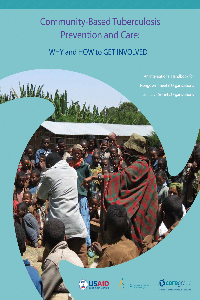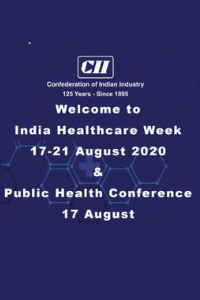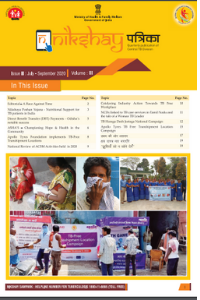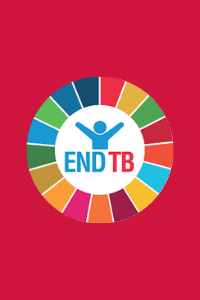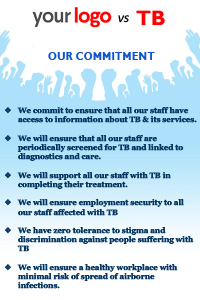
Multisectoral and Corporate Engagement Landscape of India 2023
Multi-sectoral and Corporate collaboration have made it possible to have policies and actions to go beyond medical interventions by addressing the social determinants and minimising barriers to diagnosis and treatment. They have been able to bring in effective convergence and action on awareness generation, vulnerability reduction, integration of TB-related services in existing health infrastructure, reduction of stigma & discrimination, and social protection for people infected and affected by Tuberculosis.This compendium brings forth a few commendable approaches taken by states and corporates in the country. It captures stories and experience from myriad lens and perspective including those from the programme, states, corporates, PSUs and Business Associations.
Best Practice Compendium uploaded on the CTD Nikshay portal
The Best Practice Compendium (BPC) captures innovative approaches by 15 select corporates who have done exemplary work on TB interventions. These practices can be emulated by all 100 +Corporate TB Pledge partners and the larger corporate sector engaged in TB interventions. The compendium was released by Dr Harsh Vardhan, Hon’ble Minister of Health and Family Welfare; Science and Technology and Earth Sciences, who said, “As TB usually affects the poorer sections of the population owning the lack of hygienic conditions, congestions, and deprivation of nutrition, I must congratulate CII for their focused efforts on TB augmenting the government’s efforts to eliminate TB by 2025.” The Minister also acknowledged the contribution and support of the corporate sector to join the fight to eliminate TB by 2025, under the Corporate TB Pledge initiative, and called upon more corporates to join the mission. This also marked the launch of CII’s 3 yearlong commitment to TB Free Workplace Campaign.
Community Based Tuberculosis Prevention and Care:Why and How to get involved- An international handbook from NGOs and Civil Society Organisations ( USAID, CHIP and Core Group initiative)
People living with TB often live in places that government services have a hard time reaching. TB spreads in households and communities, ranging from rural villages to urban apartment blocks to schools to workplaces and crowded places like workers’ hostels and prisons. Within ALL communities, community-oriented efforts can both help prevent the spread of TB AND support diagnosis and treatment. This document is designed to serve as a handbook, or primer, for NGOs and CSOs that are considering joining the fight against TB. It provides information on TB and how it is prevented, diagnosed, and treated, how TB programs work on the ground, how communities and CSOs can get involved, and special populations that need extra attention. Step-by-step guidance on getting started in addressing TB, pitfalls to avoid, and a list of useful resources are included.
Overcoming barriers to TB control: The Role of Advocacy, Communication, and Social Mobilization(ACSM) Training Curriculum
This curriculum is designed for training TB control professionals and civil society activists at national and local levels who are involved in ACSM efforts. It is designed to provide country level staff with the specific knowledge and skills to plan, implement, and evaluate effective ACSM interventions linked to specific TB control objectives. The curriculum structure and methodologies proposed by PATH were approved by the Stop TB Partnership ACSM Country Level Core Group members for global use
Best Practice Compendium(BPC): Innovative Approaches by Corporates to Eliminate TB by 2025 at the inaugural session of the CII India Healthcare Week 2020
The BPC captures innovative approaches by 15 select corporates who have done exemplary work on TB interventions. These practices can be emulated by all 100 +Corporate TB Pledge partners and the larger corporate sector engaged in TB interventions. The compendium was released by Dr Harsh Vardhan, Hon’ble Minister of Health and Family Welfare; Science and Technology and Earth Sciences, who said, “As TB usually affects the poorer sections of the population owing the lack of hygienic conditions, congestions and deprivation of nutrition, I must congratulate CII for their focused efforts on TB augmenting the government’s efforts to eliminate TB by 2025.” The Minister also acknowledged the contribution and support of the corporate sector to join the fight to eliminate TB by 2025, under the Corporate TB Pledge initiative and called upon more corporates to join the mission. This also marked the launch of CII’s 3 yearlong commitment to TB Free Workplace Campaign. (Click on the button below to watch video of the virtual launch of BPC)
Nikshay Patrika
This document is the quarterly publication of the Central TB Division. The publication also showcases the TB intervention success story of one of our Corporate TB pledge Partners.
Corporate TB Pledge- Galvanizing corporate support to #EndTB by 2025
Tuberculosis (TB) continues to be the largest infectious disease killer in India causing an estimated 4,500 deaths every year. The country is home to over a quarter of the global TB burden, with an estimated 27 lakh new TB cases emerging each year. Recognizing that tuberculosis affects populations inequitably, contributes to the cycle of ill-health, malnutrition and poverty, and that the spread of TB has an impact upon the community and its development, the government has waged a war against the disease. The Hon’ble Prime Minister, Shri Narendra Modi, has set an ambitious target of eliminating the disease from the country by 2025, that is 5 years ahead of the global target of SDGs by 2030 and has adopted many novel strategies since 2017.
TB Free Workplace Tool Kit
Customizable communication material on TB Free Workplaces developed in English and Hindi for Corporate TB Pledge members to support their work on TB free workplaces. The materials are all in google slide file formats, to enable CTP members to insert their company’s logos, contextualize the material, display and also use it in awareness programs, capacity building workshops, networking, and leveraging networks working on TB.
To view to the complete communication package click here


